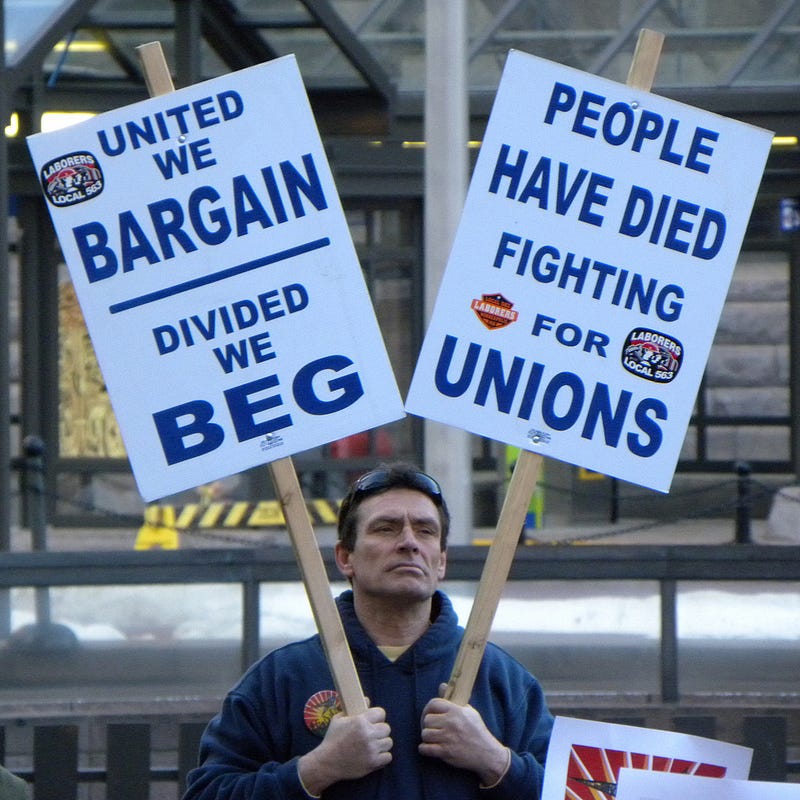Supreme Court Judges Are Now Openly Throwing Jabs at Each Other
We need to talk about the US Supreme Court these past few days. If the justices of the Court all lived together in the apartment next door to yours, you’d be forgiven for having called the cops numerous times by now due to the fear that they might start stabbing each other in a frenzy.
There have been two narrowly split decisions these past few days — the Muslim ban decision, and Janus vs. AFSCME. The latter relates to whether the First Amendment bars public sector unions from charging fees to non-members who benefit from collective bargaining contracts.
What is interesting about these two decisions is not the content of the majority opinions, but rather the tone of the minority. Whatever scrap of collegiality the US Supreme Court had left has now mostly been consumed in a maelstrom of scalding opprobrium.
26th June: Sotomayor and the Muslim Ban

There is little value in adding to the debate on the merits of the Muslim ban decision or the legal reasoning, and there’s sufficient commentary already available from both sides of politics.
It was a 5–4 decision that passed no comment on the propriety of the policy itself, closely sticking to the eternal ‘get out of jail free’ card that is national security. The 5–4 split is enough to tell us that the Court took no joy in deciding the matter, with possibly heated debate behind the scenes amongst the justices. Associate Justices Breyer, Kagan, Ginsburg and Sotomayor constituted the minority,
Justice Sotomayor wrote her own dissenting opinion, to which Justice Ginsburg joined. In almost 10 years of reading judgments by superior courts, I had never seen anything like it.
Based on the evidence in the record, a reasonable observer would conclude that the [President’s] Proclamation was motivated by anti-Muslim animus. … The majority holds otherwise by ignoring the facts, misconstruing our legal precedent, and turning a blind eye to the pain and suffering the Proclamation inflicts upon countless families and individuals, many of whom are United States citizens. Because that troubling result runs contrary to the Constitution and our precedent, I dissent.
There’s an entire ward in the hospital dedicated to that BURN.
Being a judge on a national court of last resort is a unique job in numerous ways, one of which is the fact that you get to publically spout criticism about your fellow colleagues without any fear of repercussions. Normally, however, judges self-impose certain limits on that unfettered freedom to criticise. After all, they still have to turn up to work the next day and somehow carry on business as usual.
It would seem that Justice Sotomayor has thrown all that out the window, and she’s not alone.
27th June: Kagan and the Unions

This was another 5–4 decision of the Court, which held that compelling non-members to pay fees to public sector unions violated their First Amendment rights. Again, there’s plenty of commentary out there already.
Associate Justice Kagan wrote the dissenting judgment, to which Justices Ginsburg, Sotomayor and Breyer joined. I gotta say, it gives Justice Sotomayor’s fiery opinion from the previous day a run for its money.
Kagan accuses the majority of subverting “all known principles of stare decisis”, the millennia-old common law norm that today’s court ought to adhere to yesterday’s decisions. In direct reference to passing related comments made by the majority judges in two previous cases, Kagan said:
… Relying on them is bootstrapping — and mocking stare decisis. Don’t like a decision? Just throw some gratuitous criticisms into a couple of opinions and a few years later point to them as “special justifications”.
Gloves are off now, boys and girls.
Kagan continues by expressing deep concern that “[t]he Court today wreaks havoc on entrenched legislative and contractual arrangements”. She states that “thousands of current contracts covering millions of workers” are now at risk of unravelling completely, and that the majority reached its decision “knowing that many of the parties will have to revise (or redo) multiple contracts simultaneously”. Kagan continues that, in reaching it decision:
[The majority] does so knowing that those renegotiations will occur in an environment of legal uncertainty, as state governments scramble to enact new labor legislation. … It does so with no real clue of what will happen next — of how its action will alter public-sector relations.
Clueless. She just called them clueless.
Justice Kagan wraps up her dissent, unforgivingly:
So the majority’s road runs long. And at every stop are black-robed rulers overriding citizens’ choices. The First Amendment was meant for better things. It was meant not to undermine but to protect democratic governance — including over the role of public-sector unions.
What I’d give to be a fly on the wall of the US Supreme Court Christmas party.
The acerbic invective seen these past few days from the US Supreme Court, while entertaining, leaves behind a concerning cloud of uncertainty. These judgments provide yet another perspective on the deep divisions that plague the American political discourse, as well as the extent to which these divisions run. It is entirely possible — if not beyond question — that the legislative, executive and judicial branches of the US government are undergoing periods of increasingly polarising ultra-partisanship.
The question becomes: is there still something — anything — that unites Americans?
Originally published on my Medium page, which I no longer use.